Ditapis dengan
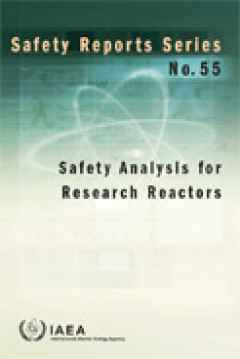
Safety Analysis for Research Reactors | Safety Reports Series No. 55
This publication provides practical guidance for performing safety analyses of research reactors. The guidance is based on present good practice worldwide. It covers all the steps required to perform safety analyses, i.e. selection of initiating events and acceptance criteria, rules and conventions, selection of computational tools, and presentation and evaluation of the analysis results. The s…
- Edisi
- -
- ISBN/ISSN
- 978-92-0-101008-7
- Deskripsi Fisik
- 81 p;1.41 MB
- Judul Seri
- -
- No. Panggil
- 621.483 IAE S
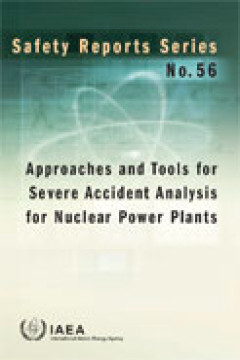
Approaches and Tools for Severe Accident Analysis for Nuclear Power Plants | …
This publication is a companion to the IAEA Safety Report, Accident Analysis for Nuclear Power Plants. It is specifically devoted to the analysis of severe accidents. Although the publication does not explicitly differentiate between various reactor types, it has been written on the basis of the available knowledge and databases developed for light water reactors (LWRs). Its application is ther…
- Edisi
- 56
- ISBN/ISSN
- 978-92-0-101608-9
- Deskripsi Fisik
- 205p;2.42MB
- Judul Seri
- -
- No. Panggil
- 621.483 IAE A

Release of Patients After Radionuclide Therapy | Safety Reports Series No. 63
There is a widespread variation in the practices with regard to the release of patients from hospital after unsealed radionuclide therapies. This publication aims to harmonize the different approaches, drawing on new advice issued by the International Commission on Radiological Protection and on a number of regional and national approaches. Particular attention is paid to the most frequent ques…
- Edisi
- 63
- ISBN/ISSN
- 978-92-0-108909-0
- Deskripsi Fisik
- 77p;817KB
- Judul Seri
- -
- No. Panggil
- 615.842 IAE R
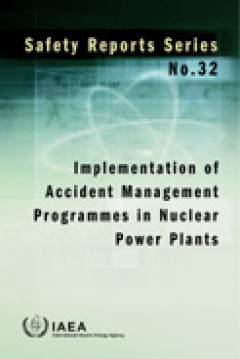
Implementation of Accident Management Programmes in Nuclear Power Plants | Sa…
This publication provides a description of the elements which should be addressed by the team responsible for the preparation, development and implementation of a plant specific accident management programme at a nuclear power plant. The issues addressed include formation of the team, selection of accident management strategies, safety analyses required, evaluation of the performance of plant s…
- Edisi
- 32
- ISBN/ISSN
- 92-0-113803-2
- Deskripsi Fisik
- 121p ; 582kb
- Judul Seri
- -
- No. Panggil
- 621.483 IAE I
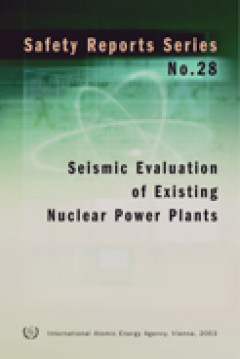
Seismic Evaluation of Existing Nuclear Power Plants | Safety Reports Series N…
This report provides guidance for conducting seismic safety evaluation programmes for existing nuclear power plants in a manner consistent with internationally recognized practice. It will be useful for regulatory organizations and other organizations responsible for the implementation of seismic safety evaluation programmes.
- Edisi
- 28
- ISBN/ISSN
- 92-0-101803-7
- Deskripsi Fisik
- 60 p ; 480 KB
- Judul Seri
- -
- No. Panggil
- 621.483 IAE S
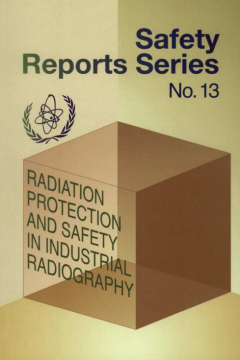
Radiation Protection and Safety in Industrial Radiography | Safety Reports Se…
This Safety Report summarizes good and current state of the art practices in industrial radiography and provides technical advice on radiation protection and safety. It contains information explaining the responsibilities of regulatory authorities, operating organizations, workers, equipment manufacturers and client organizations, with the intention of enhancing radiation protection and safety.
- Edisi
- 3
- ISBN/ISSN
- 92-0-100399-4
- Deskripsi Fisik
- 69 p; 379kb
- Judul Seri
- -
- No. Panggil
- 614.839 IAE R
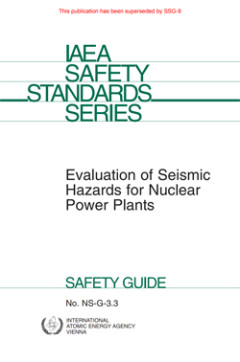
Evaluation of Seismic Hazards for Nuclear Power Plants | IAEA Safety Standard…
This Safety Guide provides guidelines and recommends procedures for the evaluation of seismic hazards for nuclear power plants. Specifically, it provides recommendations on how to determine the ground motion hazards for a plant at a particular site and the potential for surface faulting, which could affect the feasibility of construction and safe operation of a plant at that site.
- Edisi
- NS-G-3.3
- ISBN/ISSN
- 92-0-117302-4
- Deskripsi Fisik
- 31p;276kb
- Judul Seri
- -
- No. Panggil
- 621.483 IAE E
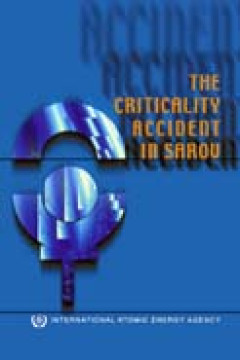
The Criticality Accident in Sarov
n 17 June 1997 a physicist working as a senior technician at the Nuclear Centre, Sarov, in the Russian Federation, was severely exposed as a result of a criticality accident with an assembly of highly enriched uranium. The exposure, which caused a high neutron radiation dose, led to death within three days despite prompt medical attention. This is the first report that the IAEA has published on…
- Edisi
- -
- ISBN/ISSN
- 92-0-100101-0
- Deskripsi Fisik
- 46p;470kb
- Judul Seri
- -
- No. Panggil
- 621.4832 IAE T
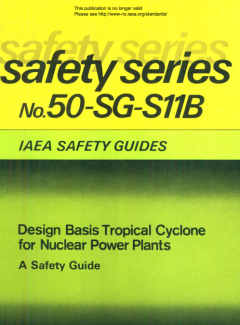
Design Basic Tropical Cyclcne for Nuclear Power Plants | Safety Series No. 50…
The distribution and estimation of heavy rains in tropical cyclones and their effects on flooding are, however, not discussed, since these aspects are considered in the IAEA Safety Guides 50-SG-S10A, 50-SG-S10B and 50-SG-S 11 A.
- Edisi
- -
- ISBN/ISSN
- -
- Deskripsi Fisik
- 72p
- Judul Seri
- -
- No. Panggil
- 621.483 IAE D
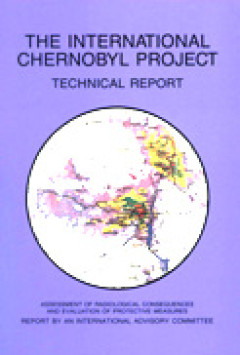
The International Chernobyl Project | Assessment of Radiological Consequences…
The International Chernobyl Project was launched in 1990 at the request of the Government of the USSR to assess the environmental and health situation in the areas of the Soviet Union contaminated by the Chernobyl accident and to evaluate the measures taken by the authorities to safeguard the health of the population still living in these areas. Some 200 scientists from 25 countries and 7 inter…
- Edisi
- -
- ISBN/ISSN
- 92-0-129191-4
- Deskripsi Fisik
- 650p
- Judul Seri
- -
- No. Panggil
- 615.8 IAEA T
 Karya Umum
Karya Umum  Filsafat
Filsafat  Agama
Agama  Ilmu-ilmu Sosial
Ilmu-ilmu Sosial  Bahasa
Bahasa  Ilmu-ilmu Murni
Ilmu-ilmu Murni  Ilmu-ilmu Terapan
Ilmu-ilmu Terapan  Kesenian, Hiburan, dan Olahraga
Kesenian, Hiburan, dan Olahraga  Kesusastraan
Kesusastraan  Geografi dan Sejarah
Geografi dan Sejarah